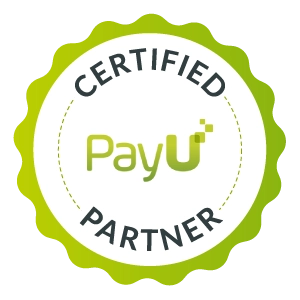
In the world of digital marketing, email remains one of the most cost-effective and impactful tools for small businesses. As many entrepreneurs seek affordable, high-ROI strategies to connect with customers and boost their brands, email marketing consistently proves its worth. This blog, titled Boosting Your Small Business with Email Marketing: Benefits & Tips, explores how small businesses can thrive using email marketing and highlights the many benefits of digital marketing for small businesses in the process.
The Importance of Email Marketing for Small Businesses
Email marketing offers a direct line of communication between you and your customers. Unlike social media platforms—where reach can be limited by algorithms—emails land directly in inboxes, creating a personal connection that drives engagement and conversions.
Key Stats that Prove Email Marketing Works:
- Email generates an average ROI of $42 for every $1 spent.
- 81% of small businesses rely on email as their primary customer acquisition channel.
- Personalized email campaigns deliver 6x higher transaction rates.
Clearly, email marketing is a pillar of success when we talk about the benefits of digital marketing for small businesses.
Core Benefits of Email Marketing for Small Businesses
1. Cost-Effective Communication
Email marketing tools like Mailchimp, Constant Contact, and ConvertKit offer low-cost solutions. For a fraction of the price of print or TV ads, businesses can reach thousands of people.
2. Highly Targeted Campaigns
You can segment your audience based on interests, behavior, or demographics, which leads to personalized messaging and higher conversion rates.
3. Increased Customer Retention
Regular newsletters and updates help you stay top-of-mind. Keeping in touch with existing customers is more cost-effective than acquiring new ones.
4. Trackable Performance Metrics
Open rates, click-through rates, bounce rates, and conversions are all measurable, giving you actionable data to refine your campaigns.
5. Automation and Scalability
Email marketing platforms allow you to automate welcome emails, follow-ups, cart abandonment messages, and more—saving time and effort while scaling operations.
6. Boosts Website Traffic
Including blog links, product pages, and event announcements in your emails can drive more traffic to your website.
Email Marketing Strategy: Step-by-Step Guide
1. Build a Quality Email List
Use sign-up forms on your website, social media, and even in-store to grow your email list. Offer incentives like discounts or free resources to encourage sign-ups.
2. Choose the Right Platform
Select an email marketing tool that suits your business size and needs. Most platforms offer drag-and-drop templates, automation, and analytics.
3. Craft Engaging Content
Create value-driven content like:
- Promotions and sales
- How-to guides
- Product announcements
- Customer stories
- Event invitations
4. Personalize Your Messages
Use the recipient’s name, recommend products based on past purchases, and tailor content to their interests.
5. Design Mobile-Responsive Emails
Most people read emails on their phones. Make sure your emails are mobile-friendly with clear CTAs (Calls to Action).
6. A/B Testing
Test different subject lines, email designs, and send times to determine what works best for your audience.
7. Monitor and Optimize
Use the analytics tools provided by your platform to refine your strategy and improve your results.
Real-Life Success Stories
Case Study 1: Boutique Retailer
A small fashion boutique used email marketing to launch their seasonal collection. By segmenting their list into age groups and sending personalized style guides, they saw a 35% increase in online sales within a month.
Case Study 2: Local Café
A neighborhood café sent weekly emails featuring new menu items, loyalty rewards, and events. Their customer visits increased by 20%, and email subscribers often shared the content with friends.
Best Practices for Small Business Email Marketing
- Keep it Simple: Clear subject lines, concise messages, and a single CTA work best.
- Stay Consistent: Send emails regularly but don’t overwhelm your audience.
- Use Visuals: Include high-quality images to grab attention.
- Be Compliant: Follow email marketing laws (like GDPR or CAN-SPAM) by including opt-outs and using permission-based lists.
Email Marketing Tools Recommended for Small Businesses
- Mailchimp: Best for beginners
- ConvertKit: Ideal for creators and bloggers
- Constant Contact: Great for e-commerce
- MailerLite: Budget-friendly option
Email Marketing vs. Other Digital Marketing Channels
While social media and paid advertising play their role, email marketing stands out for:
- Ownership: You own your list—unlike social followers.
- Longevity: Emails remain in inboxes longer than social posts on feeds.
- Control: No algorithm filters your content.
This positions email marketing as one of the strongest benefits of digital marketing for small businesses aiming for sustainable growth.
Overcoming Common Email Marketing Challenges
- Low Open Rates: Improve subject lines and segment your list.
- High Unsubscribe Rates: Avoid over-emailing and always provide value.
- Spam Filters: Use trusted email services, avoid spammy language, and maintain list hygiene.
Future Trends in Email Marketing for Small Businesses
- Interactive Emails: Polls, sliders, and quizzes increase engagement.
- AI-Powered Personalization: AI tools help craft smarter content.
- Hyper-Segmentation: Ultra-specific audience targeting boosts conversion rates.
Final Thoughts
Email marketing continues to be a powerful tool in the small business digital toolkit. It builds relationships, drives sales, and provides insights—often at a fraction of the cost of other strategies.
As part of the broader strategy, email marketing clearly exemplifies the benefits of digital marketing for small businesses—delivering measurable results, customer loyalty, and long-term value.
If you haven’t started yet, there’s no better time. With the right tools, strategy, and consistency, your small business can thrive through the power of email.













